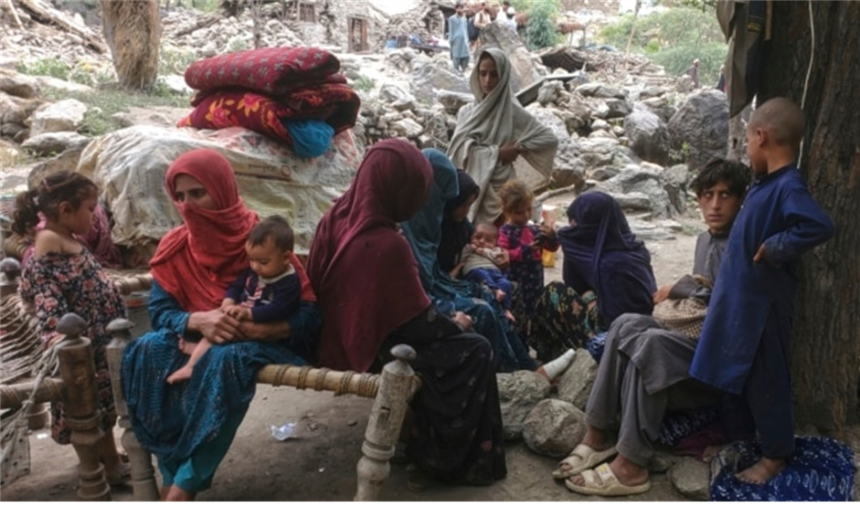RASC News Agency: The United Nations Children’s Fund (UNICEF) has sounded the alarm over the worsening humanitarian crisis in eastern Afghanistan, warning that more than 212,000 children in earthquake-affected areas are now at risk of life-threatening diseases caused by contaminated water and the near-total collapse of healthcare and sanitation services.
In its latest report released on Thursday, October 24, UNICEF confirmed that at least 132 drinking water sources were completely destroyed by the recent series of earthquakes, leaving thousands of families without access to clean water, safe sanitation, or hygiene facilities. The agency warned that the destruction has created a fertile ground for the rapid spread of waterborne and infectious diseases, including acute watery diarrhea, severe dehydration, and skin infections, particularly among children.
Hospitals and clinics in the affected provinces Kunar, Nangarhar, and Laghman are reporting a dramatic surge in patients, with children making up the vast majority of the newly infected. Health workers in these regions describe overcrowded wards, shortages of essential medicines, and an acute lack of clean water even within medical facilities.
Tajudeen Oyewale, UNICEF’s representative in Afghanistan, said the situation was “a double disaster.”
“The earthquake not only destroyed homes,” he said, “but it now threatens survivors’ lives through disease outbreaks. Children who escaped the rubble are now sleeping under tents and makeshift shelters without clean water, without toilets, and without medical support. This is a perfect storm for a public health catastrophe.”
UNICEF’s report further highlighted that the collapse of water and sanitation systems has exposed women and girls to heightened risks of gender-based violence and insecurity, as many are forced to walk long and dangerous distances in search of water. Aid agencies warn that these unsafe journeys often expose women to harassment and violence, worsening the humanitarian toll of the disaster.
The Water, Sanitation, and Hygiene (WASH) section of UNICEF’s emergency program is facing a severe funding shortfall, with only half of the required USD 21.6 million so far secured. The agency urged international donors to increase their support urgently to prevent the spread of deadly diseases and save thousands of young lives.
More than six weeks ago, a 6.0-magnitude earthquake struck eastern Afghanistan, with the Kunar province suffering the heaviest damage. According to United Nations estimates, the disaster killed over 2,600 people, injured more than 3,600, and completely destroyed more than 6,300 homes, while another 2,170 houses sustained severe damage.
Yet despite the scale of devastation, aid delivery remains painfully slow under Taliban control, with local authorities accused of mismanagement, political favoritism, and negligence in coordinating relief efforts. Survivors in the hardest-hit regions continue to live in tents, exposed to harsh weather and disease, as the Taliban’s promises of reconstruction remain largely unfulfilled and disconnected from the suffering on the ground.
Analysts and humanitarian observers say that the Taliban’s lack of administrative capacity and transparency has left international agencies struggling to respond effectively. While the regime repeatedly claims to have distributed emergency aid, independent assessments indicate that many of the affected families have yet to receive even basic assistance, forcing communities to rely almost entirely on international organizations such as UNICEF, the World Food Programme, and the Red Crescent.
UNICEF’s warning serves as yet another reminder of the deep humanitarian vacuum in Afghanistan, where the absence of legitimate governance and the systematic failure of the Taliban to ensure even the most basic public services have left millions of citizens especially children trapped between disaster and neglect.






